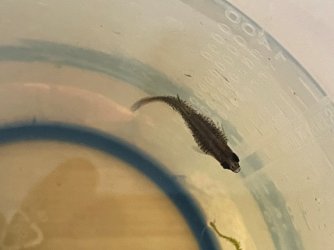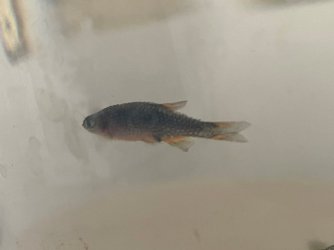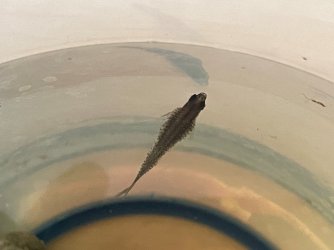Sprizmo
New Member
Request Help - Possible Cotton Wool Disease
Tank size: 120L
tank age: 5 months
pH: 7.4
ammonia: 0.00
nitrite: 0.00
nitrate: 20 ppm
kH: 6
gH: 14
tank temp: 25 C
Fish Symptoms (include full description including lesion, color, location, fish behavior):
Celestial Pearl Danio, female, sitting very near the surface under amazon frogbit leaves with a hazy white cotton wool like substance around it. Not moving, just coasting stationary. Managed to isolate the fish in a 2 litre jug for now in case contagious.
Volume and Frequency of water changes:
Every 2 weeks, 40 litres of water. Did one earlier today and noticed this after filling tank back up
Chemical Additives or Media in your tank:
None
Tank inhabitants:
10 x Celestial Pearl Danios
3 x Three Spot Gourami
2 x Bristlenose Catfish
Recent additions to your tank (living or decoration):
None
Exposure to chemicals:
None
Digital photo (include if possible):
Couldn't get one before isolating. Isn't a lot or white stuff, just enough for me to notice. Should I isolate the fish in a jug? Or add it back in? No other fish show signs.
Just looking for advice or possible medications to use. Gourami's mean I can't use Pimafix, catfish can't use salt?
Tank size: 120L
tank age: 5 months
pH: 7.4
ammonia: 0.00
nitrite: 0.00
nitrate: 20 ppm
kH: 6
gH: 14
tank temp: 25 C
Fish Symptoms (include full description including lesion, color, location, fish behavior):
Celestial Pearl Danio, female, sitting very near the surface under amazon frogbit leaves with a hazy white cotton wool like substance around it. Not moving, just coasting stationary. Managed to isolate the fish in a 2 litre jug for now in case contagious.
Volume and Frequency of water changes:
Every 2 weeks, 40 litres of water. Did one earlier today and noticed this after filling tank back up
Chemical Additives or Media in your tank:
None
Tank inhabitants:
10 x Celestial Pearl Danios
3 x Three Spot Gourami
2 x Bristlenose Catfish
Recent additions to your tank (living or decoration):
None
Exposure to chemicals:
None
Digital photo (include if possible):
Couldn't get one before isolating. Isn't a lot or white stuff, just enough for me to notice. Should I isolate the fish in a jug? Or add it back in? No other fish show signs.
Just looking for advice or possible medications to use. Gourami's mean I can't use Pimafix, catfish can't use salt?




